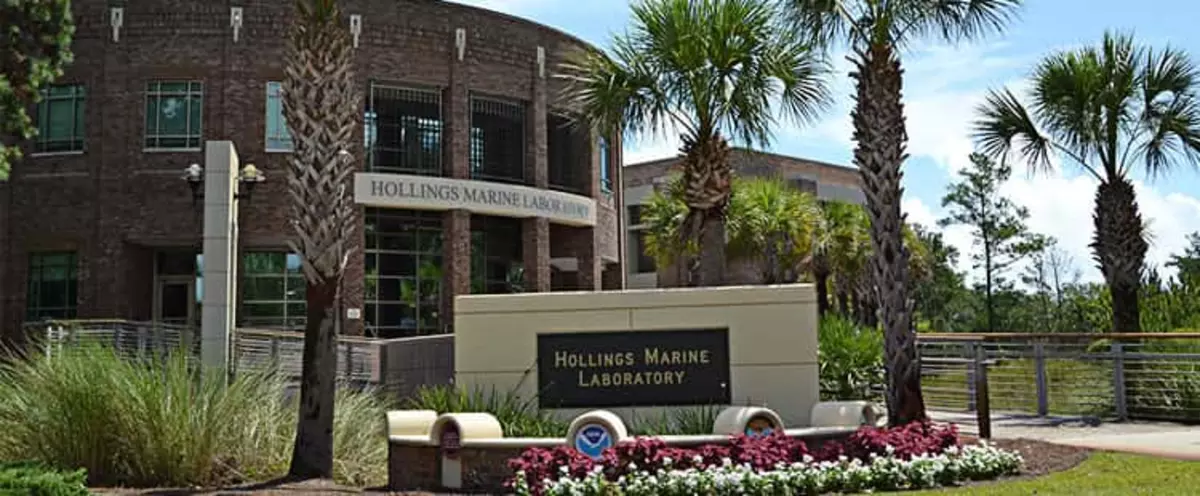Using a multidisciplinary research strategy, teams of scientists from the chemical, biological, environmental, and biomedical fields perform cutting-edge research that focuses on solving the Nation's coastal environmental- and health-related problems. Located on the Fort Johnson Campus at the South Carolina Marine Resources Center on the tip of James Island, in Charleston, SC, the HML is a unique partnership of governmental and academic agencies including NOAA's National Oceanic and Atmospheric Administration, the National Institute of Standards and Technology, the South Carolina Department of Natural Resources, the College of Charleston, and the Medical University of South Carolina.
By having part of its staff from the Chemical Sciences Division (CSD) located at the HML and working collaboratively with scientists from the partner institutions, NIST is better able to develop programs within its mission that respond to the needs of the marine, human and environmental health research communities. The partnership allows NIST to investigate new areas of scientific and technological development by taking advantage of the expertise of the diverse scientific community at HML. NIST and HML partners provide technology transfer to students, visiting researchers and post docs who will be the future scientists and managers. At the HML, they experience a diverse environment as partner laboratories work on both applied and discovery aspects of marine, human health and environmental science. Researchers and students leverage the different capabilities in HML laboratories thereby deepening understanding and providing unique insight to scientific questions.


